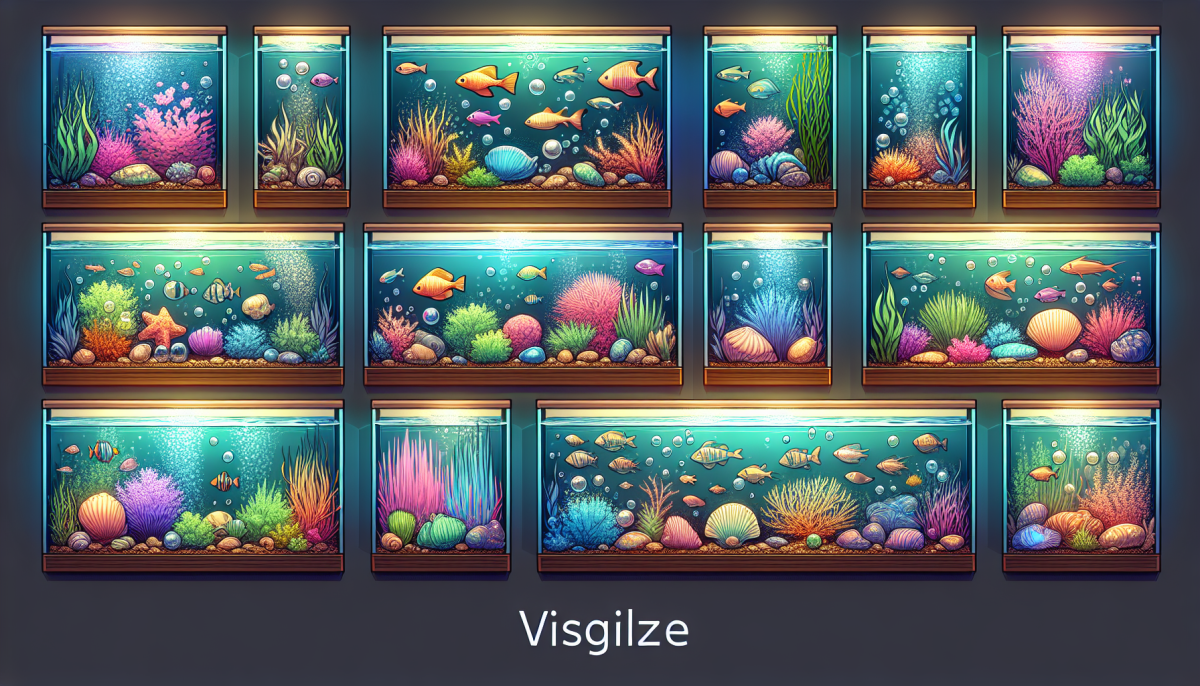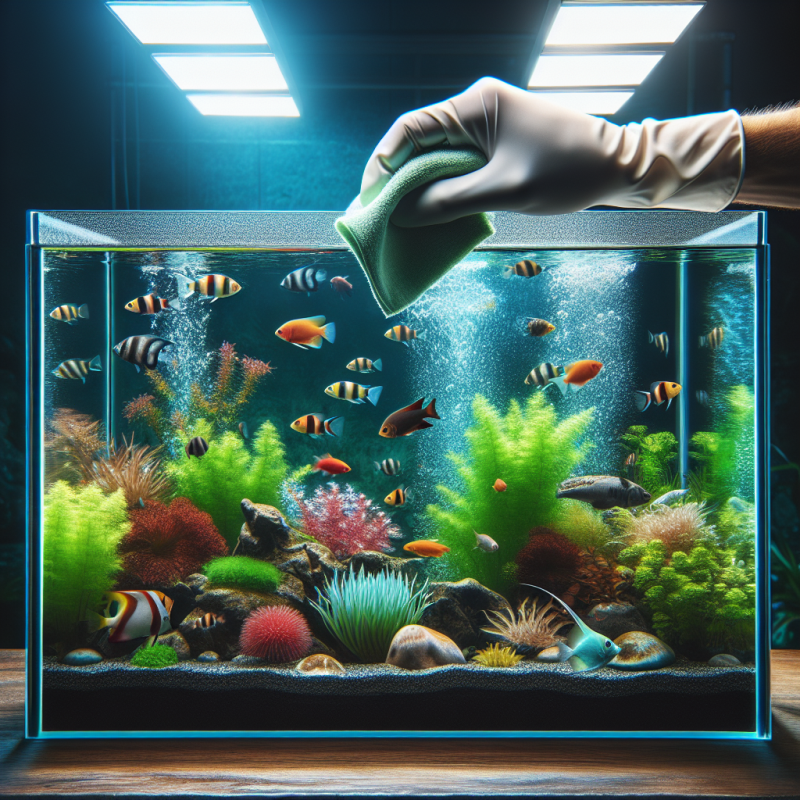Choosing the right tank for your pet can be challenging, but it is also important. Choosing the right tank allows your pet to feel comfortable in their habitat and can also promote healthy living. Depending on the animal, the size, shape, and other qualities of the tank can vary. It is important to find the right tank that meets the needs of your pet.
This article will aim to provide guidance on how to choose the right tank for different animals. It will cover a variety of animals such as fish, reptiles, and amphibians, and discuss the unique requirements for each.
So, let’s get started and learn about all the things to consider when choosing a tank for your pet!
Considerations for Choosing a Tank
When it comes to choosing the right tank for a pet animal, there are several things that should be taken into consideration. Size, shape, and type of material should all be considered to ensure that the tank is the appropriate environment for the animal.
Size of Tank
The size of the tank is an important factor to consider when selecting the right tank for an animal. The size of the tank will depend on the size and type of the animal. For example, a large tank may be necessary for an animal such as a turtle, while a smaller tank may be sufficient for a fish.
Shape of Tank
The shape of the tank is another factor to consider when selecting the right tank for an animal. Tank shapes can range from rectangular to circular to spherical. Depending on the animal, a particular shape may be necessary to accommodate its specific needs and requirements.
Type of Material
The type of material used to make the tank is also an important consideration to make. The material should be safe and non-toxic for the animal. In addition, the material should be resistant to scratches and other signs of damage to ensure the tank remains safe for the animal.
Different Tanks for Different Animals
Are you thinking of getting an aquarium and not sure what size tank is right for the animals you want to keep? Here is a guide to choosing the right tank for different animals.
Fish
The most common type of tank is an aquarium. The size you should choose depends on the number and type of fish you plan to keep. A 40 litre tank is generally OK for a few small fish such as guppies and neon tetras, whereas a larger tank of 200 litres or more is better for larger fish such as angel fish, discus and other large species.
Turtles
Turtles require a larger tank than fish – 150-200 litres for a small turtle, up to 500 litres for a large turtle. The tank should have a large area of land and a deep pool of water. A filter and UV light are also necessary for the turtle’s health.
Reptiles
Reptiles require a well-ventilated tank with a basking area and plenty of cover. Different species require different sizes of tank; for example, a small gecko can be housed in a 45 cm tank, while a large boa constrictor needs a tank at least 1.8 metres long.
Invertebrates
Invertebrates such as snails and crabs need a shallow freshwater tank with a lid to prevent them from crawling out or being disturbed by other animals. A 10-20 litre tank with an air pump is usually suitable.
Of course, some animals will also require additional equipment such as lighting and pumps, but the size of the tank should be the first consideration when choosing the right tank for different animals.
3.1 Fish
When choosing the right tank for fish, the key component to consider is size. Knowing the type of fish and their desired habitats is crucial. For example, if you are looking at tropical fish, they prefer warm water, so the tank should be heated. Additionally, depending on the size and number of fish you plan to keep, you'll need to consider the capacity and shape of the tank. Different species also require different amounts of space and variety in the tank—some require gravel, plants, rocks, and caves to live happily.
3.2 Reptiles
Reptiles need adequate heat and a place to hide away. Reptiles require well-ventilated tanks, as well as protective light shields to make sure that the animals don’t get too hot. Be sure to research the specific needs of the particular reptile species you are looking to keep before committing to a tank size. For the home terrarium, these small tanks can range from 10-20 gallons, depending on the size of the reptile. Smaller tanks may require more frequent cleaning, while larger tanks may cost more.
In addition to being sure that the enclosure is large enough, you should also pay attention to its construction. Glass tanks are great for visibility, but are heavier and have lower insulation than plastic. Consider using a top with a secure lid to help keep your reptile safe, as he or she will require a lid of some sort when left unsupervised. It is also important to make sure that the tank is properly heated, with an appropriate light source. UVA and UVB lighting can be used to provide vitamin D3 to allow your reptile to metabolize calcium.
Finally, you should consider adding tank accessories to help make your reptile's tank more inviting and to provide them with a more natural environment. Consider adding branches, rocks, or cork bark for climbing, as well as artificial plants for added decor.
3.3 Amphiabians
If you plan on keeping amphibians in your tank, you need to pick the right size. Generally, the rule of thumb is to use a 10-gallon tank per adult amphibian. This allows plenty of room for swimming and ensures that adequate levels of water oxygenation are maintained.
In addition to the size of the tank, there are other considerations that need to be made. First, you need to use a tight-lidding tank as most amphibians can jump. You should also use a filter to ensure that the water is kept clean and well-oxygenated. Moreover, you should ensure that the tank is heated to the correct temperature for the particular species of amphibian you plan on keeping.
Finally, you need to place the tank in an area that will receive indirect sunlight. This is essential for amphibian health and will create the proper environment for them to thrive.
3.4 Small Mammals
Small mammals, such as guinea pigs, hamsters, and mice, are highly active and need a lot of space. As a result, their tanks should be significantly larger than tanks for reptiles, fish, or amphibians. When choosing a tank for small mammals, look for one with a minimum size of 30 gallons. Be sure to also choose a tank with a locking lid, as small mammals can be quite escape-savvy.
To make the tank more suitable for small mammals, include features such as:
- adequate ventilation
- an overlap between the lid and the edge of the tank to prevent escape
- plenty of educational and hideable items for enrichment
- straight sides to prevent injury
When decorating the tank, use soft, safe materials. Make sure to also provide plenty of food, water, and nesting material. Finally, be sure to check the tank on a regular basis, to ensure it is safe and healthy for your small mammal.
4. Factors to Consider When Buying
When choosing the right tank for your pet, there are several factors to consider.
Size
The size of the tank should reflect the size of your pet. If you plan to keep several animals, you should keep the tank population in mind when selecting a tank. Crowding can be detrimental to the health of your animals and lead to disease or death.
Shape
The shape of the tank is also important. Tanks come in various shapes, from round to long rectangles. Selecting a tank with a shape conducive to the species of animal you are keeping can provide them with more room to roam or swim.
Material
Tanks are typically made with either glass or plastic. Glass tanks are great because they are heavy and easy to clean, while plastic tanks are generally lighter and more affordable. Consider which would best fit the needs of the animal you are keeping before making a selection.
Cost
Finally, tanks can range in cost from a few dollars to hundreds of dollars. Consider the important factors above and make sure you are getting the best quality tank for your money before you make a final purchase.
5. Conclusion
5. Conclusion
Tank selection for your pet is an important choice, as it needs to best meet the creature’s needs to ensure a healthy and comfortable environment. Different animals have different requirements, so be sure to research what works best for your pet species.
Aquariums come in a variety of shapes and sizes, and the right size tank for your pet helps to ensure a healthy, happy pet. Tanks are also available in many different materials, giving you the option to choose one that is both durable and tailored to your pet’s needs.
The key to having a successful pet tank experience is making sure you have chosen the appropriate tank for your particular pet. With the right tank, you can ensure that your beloved pet has the best environment to thrive.



